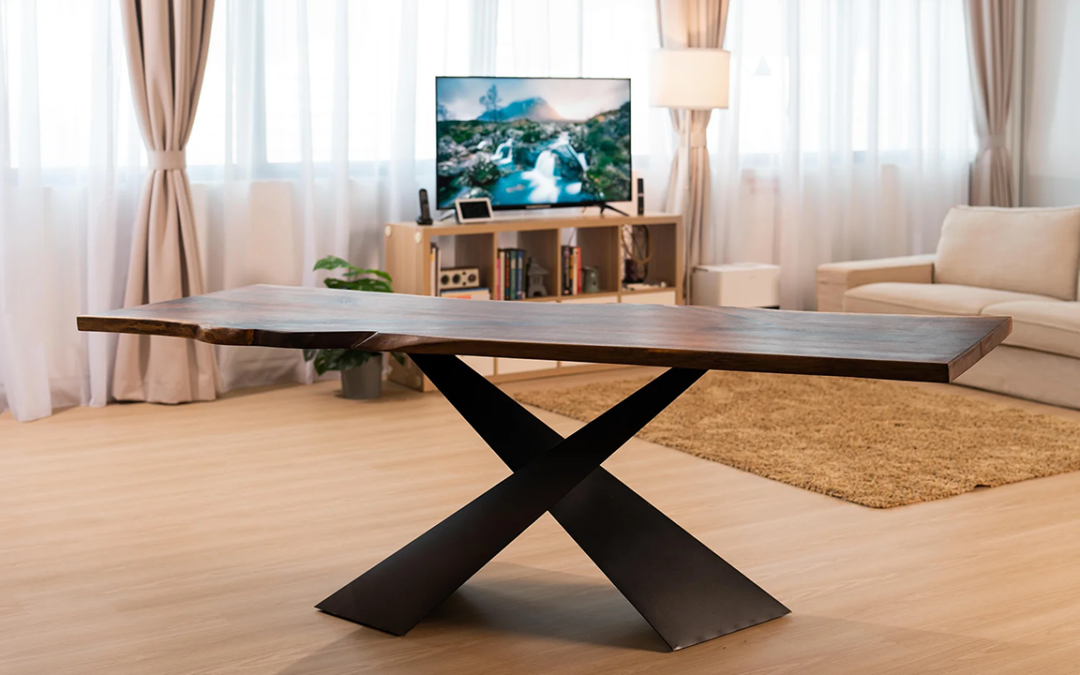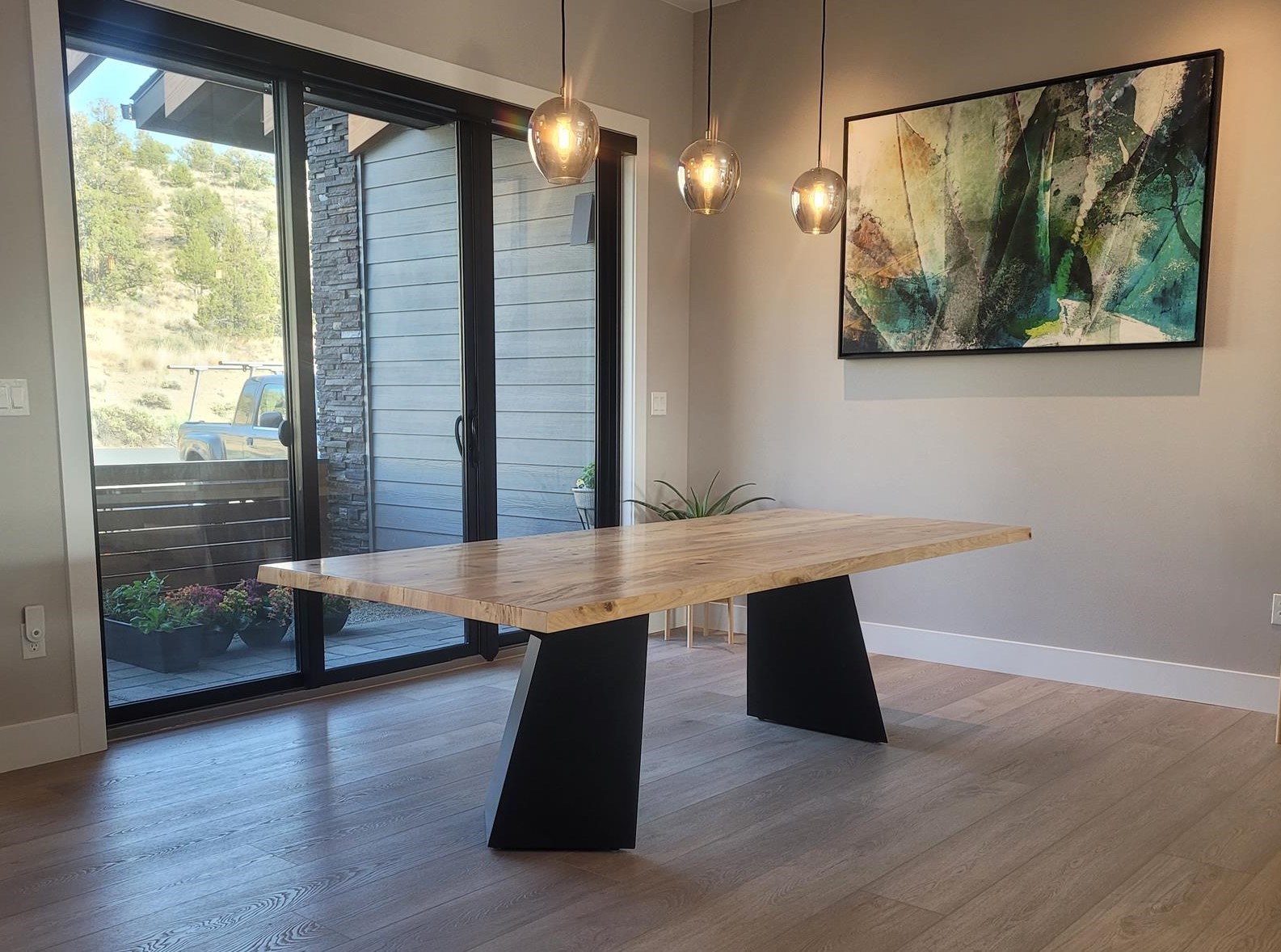Update Your Furnishings with Stylish Dining Room Table Legs
Update Your Furnishings with Stylish Dining Room Table Legs
Blog Article
A Detailed Take A Look At Table Leg Styles: Locating the Ideal Suit
Choosing the ideal eating table leg style is critical for both aesthetic charm and functional performance. Standard four legs provide ageless sophistication and stability, while the stand base offers raised legroom and a modern look. For those with bigger tables, trestle legs guarantee durable support, whereas barrette legs present a mid-century modern-day vibe with their minimalist layout. The x-shaped legs mix contemporary design with enhanced security. Each of these options brings special advantages, making the choice greater than simply an issue of preference. Explore better to find which style perfectly complements your dining area and way of living.
Conventional 4 Legs
Amongst the numerous kinds of eating table leg styles, the conventional four-leg design remains a timeless selection for several houses. 4 legs supply balanced support, ensuring the table continues to be secure and capable of bearing substantial weight (dining room table legs).
From a visual viewpoint, the typical four-leg layout can be conveniently adapted to various indoor designs. Whether crafted from wood, steel, or a mix of materials, these legs can be intricately sculpted, smooth and minimalistic, or anything in between. Their flexibility allows them to enhance both rustic and contemporary setups flawlessly.
Additionally, the simple framework of the four-leg style helps with convenience of motion and placement within an area. Unlike more facility bases, this style decreases blockages, providing enough legroom for diners. In recap, the conventional four-leg eating table leg style weds withstanding elegance with functional functionality, making it a sharp choice for those looking for both form and feature in their eating furniture.
Stand Base
Typically celebrated for its classy and space-efficient style, the stand base is a prominent choice to the conventional four-leg arrangement in dining table leg styles. This distinct base generally includes a single central column sustaining the table top, which can vary in type, from ornately sculpted wood to smooth, modern-day metal. One of the key benefits of the stand base is its ability to take full advantage of legroom and seating adaptability. Without corner legs, diners are managed better liberty of movement, making it an excellent choice for round and oval tables that advertise even more intimate and comprehensive gatherings.
Moreover, the stand base's central support can manage considerable weight, permitting the use of heavier tabletops, such as marble or thick hardwood. This strength coupled with its aesthetic versatility makes the pedestal base a popular choice in both traditional and contemporary interior setups. It can seamlessly incorporate with numerous layout styles, from traditional sophistication to minimalist modernity. The central column itself supplies a canvas for detailed styles and creative expressions, adding an element of visual passion under the table. In recap, the pedestal base combines capability snappy, making it a fine-tuned and useful option for varied dining environments.
Trestle Legs
Trestle legs supply a robust and classic structure for dining tables, identified by their horizontal cross-bracing and tough support beams. Originating from middle ages times, this style has actually progressed yet retained its essential structure, making it a seasonal favorite in both typical and contemporary setups. The central trestle beam of light, frequently sustained by two or even more upright messages, supplies exceptional stability, permitting for larger table sizes without the need for extra legs.
A significant benefit of trestle leg tables is the adequate legroom they supply. Unlike tables with four corner legs, the absence of obstructions at the table's edges provides unobstructed area for chairs and restaurants, boosting comfort and access. This makes trestle tables excellent for accommodating larger events, whether in an eating room or a banquet hall.
The visual versatility of trestle legs is notable. Offered in a selection of products such as wood, metal, and composite, they can be completed to enhance a wide variety of interior styles. From rustic farmhouse to streamlined modern-day designs, trestle legs can be customized to fit private preferences. Their long-lasting charm and practical advantages make trestle legs an engaging selection for those looking for both design and usefulness in their dining table.
Hairpin Legs

The appeal of hairpin legs exists in their simpleness and flexibility - dining room table legs. Readily available in a series of materials, consisting of steel and brass, they can be ended up in numerous colors to match various interior styles. Whether coupled with a rustic wood table top or a contemporary glass surface, hairpin legs effortlessly blend functionality with a touch of vintage appeal
Sturdiness is another significant attribute of barrette legs. Despite their delicate appearance, these legs are engineered to birth significant weight, ensuring the table remains steady and safe. Furthermore, they are reasonably very easy to mount, making them a preferred choice for DIY enthusiasts and professional furniture makers alike.
X-Shaped Legs

Constructed from products such as steel, timber, or a combination of both, X-shaped legs can be customized to match various style choices. Steel legs frequently provide a streamlined and industrial feeling, perfect for loft-style apartments and contemporary eating spaces. On the other hand, wood X-shaped legs supply a warmer, much more rustic charm, ideal for farmhouse or diverse insides. The convenience in products permits homeowners to personalize their eating tables to much better fit their total design plan.
Moreover, the engineering behind X-shaped legs ensures even weight distribution, reducing the danger of wobbling and improving longevity. This makes them specifically fit for bigger eating tables that call for added assistance. Fundamentally, X-shaped legs mix functional design with contemporary aesthetics, making them a timeless option for diverse dining environments.
Conclusion
An extensive understanding of table leg styles reveals explanation the distinctive features and advantages of each style. Standard four legs provide stability and classic allure, while stand Learn More Here bases offer legroom and a streamlined look. Trestle legs make certain durable support for larger tables, and barrette legs introduce a mid-century modern visual. X-shaped legs incorporate contemporary design with boosted security. Choosing the appropriate leg design makes sure both useful and aesthetic complete satisfaction in any eating area.
Report this page